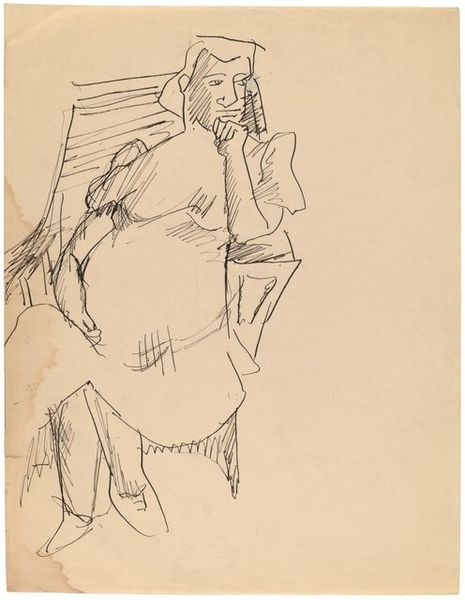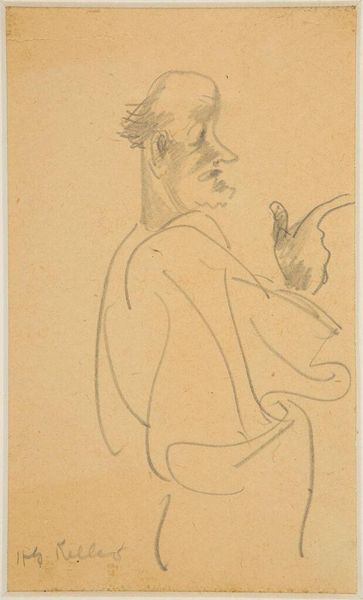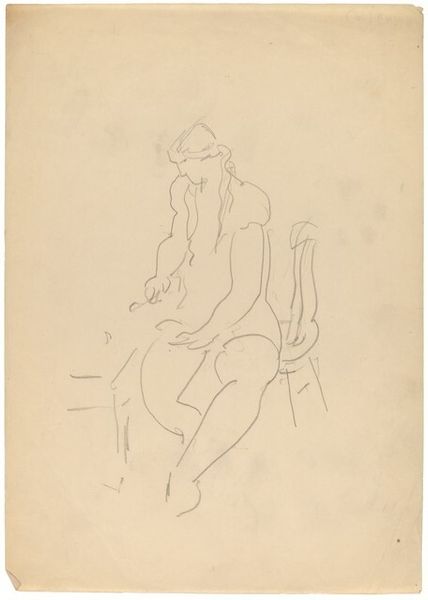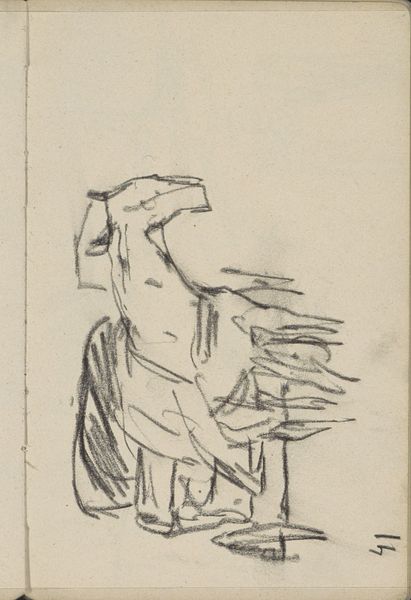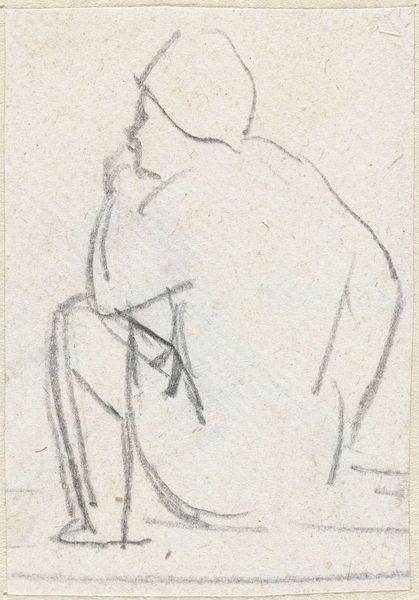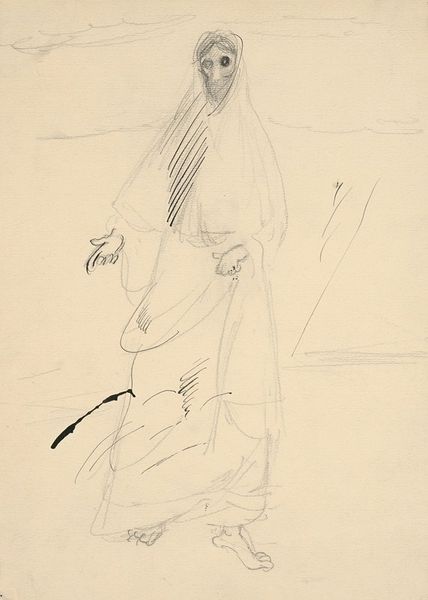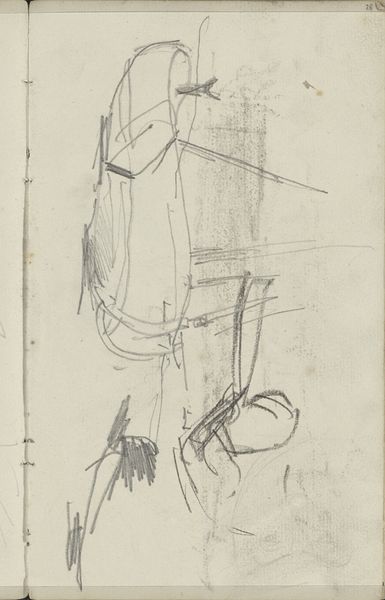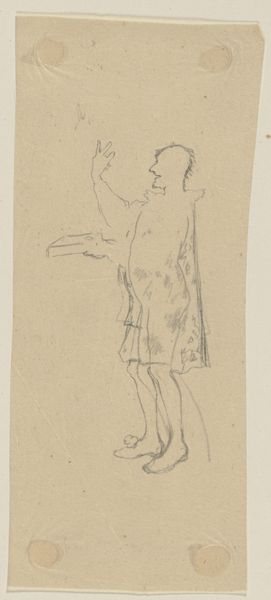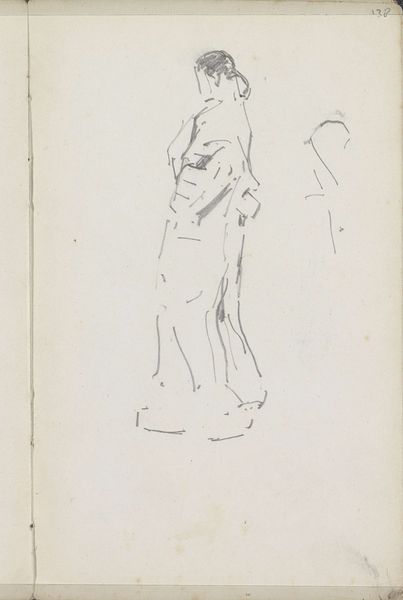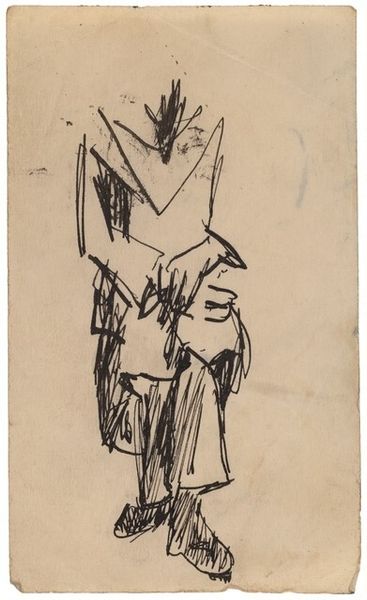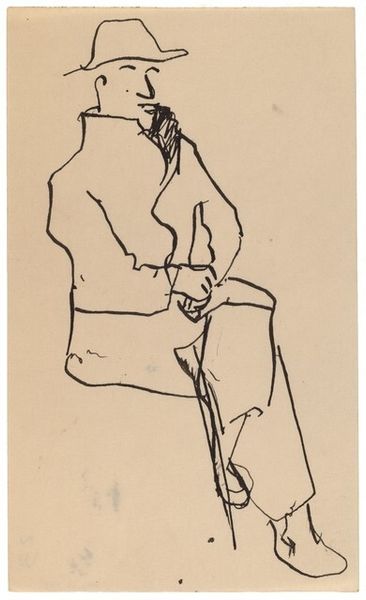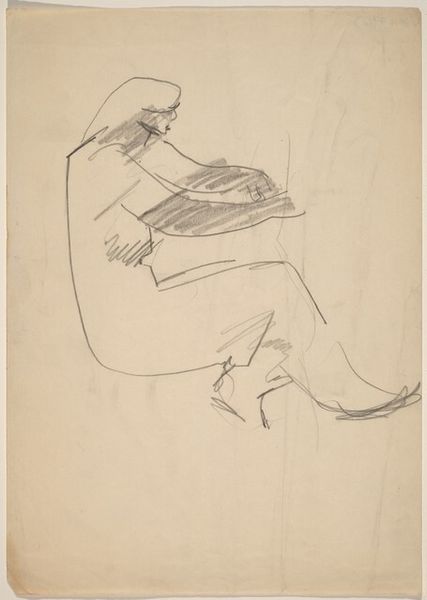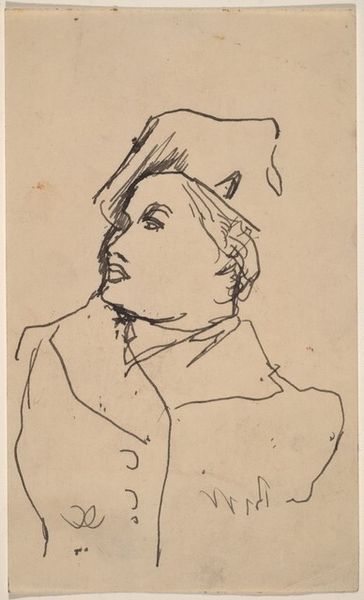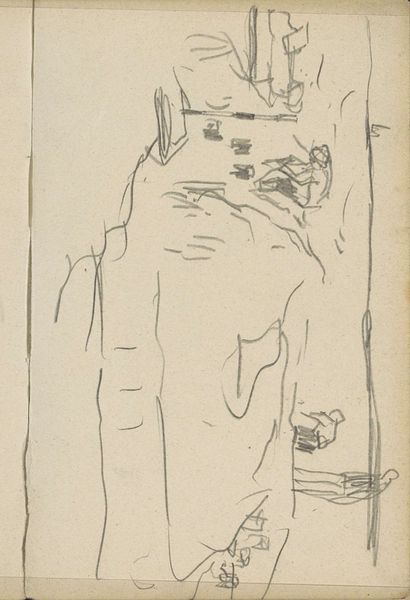
drawing, ink, pen
#
portrait
#
drawing
#
ink drawing
#
pen sketch
#
figuration
#
ink
#
line
#
pen
Dimensions: overall: 12.5 x 7.5 cm (4 15/16 x 2 15/16 in.)
Copyright: National Gallery of Art: CC0 1.0
Curator: What a striking portrait in line and ink. This drawing, “Seated Woman in Hat, Facing Left in Profile” is credited to Mark Rothko, though undated. It’s interesting to see Rothko explore figuration in this way, so distant from the abstract expressionism that defined him later. Editor: Immediately, the economy of line impresses me. The curve of the neck, the angle of the hat, the way he suggests volume with such spare strokes. There's a certain elegance in its simplicity. Curator: Absolutely, but I see something beyond just elegance. Considering the historical context of the time—perhaps the early 20th century, given the style—this portrait could be seen as a study in the constraints placed on women in society. The hat, the posture, they all speak to a certain confinement. The title suggests Rothko did not see the work as complete. Perhaps an unfinished conversation. Editor: A confinement perhaps, or perhaps a certain stylish reserve. Look at how the lines define the hat, the confident curve of the brim. And the gaze, though a profile, suggests an active intelligence. Is this not an expression of strength in its own subtle way? The ink is deftly applied; there’s even a suggestion of chiaroscuro. Curator: True, there's a strength, but within limitations. What was permissible then? This wasn’t necessarily strength on equal footing with men; her place remained defined. And even Rothko's shift away from figuration—didn't that mirror a wider societal rejection of rigid representations? Think of women during wartime; they sought roles of increased independence. How might this tension be encapsulated in Rothko's piece? Editor: Perhaps. But before assigning those readings, I see something intriguing in the composition itself. Notice how the hat anchors the whole piece? Without it, the figure seems almost adrift. The hat gives definition, not confinement. The linework almost becomes a sort of topography, a structured, self-contained system. Curator: An interesting observation! Seeing the formal qualities, but recognizing those shapes carry historical weight allows for richer meaning. Art never exists in a vacuum, and bringing both historical and structural readings together help understand social and emotional forces in a creative act. Editor: And I would add, by studying art's internal grammar—the syntax of line, form, and texture—we see that Rothko creates visual tension, a dynamic field that exceeds the mere subject matter. Curator: A tension that encapsulates her era perhaps, while suggesting paths beyond. Editor: Indeed, the artwork’s success can come down to its elegant expression through shape.
Comments
No comments
Be the first to comment and join the conversation on the ultimate creative platform.
